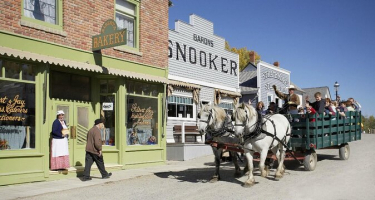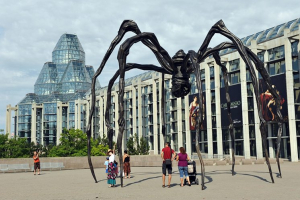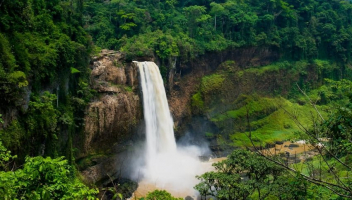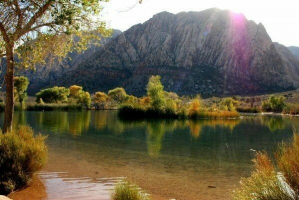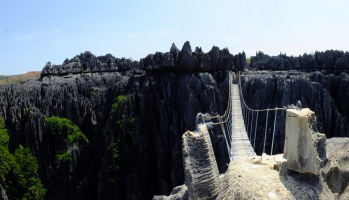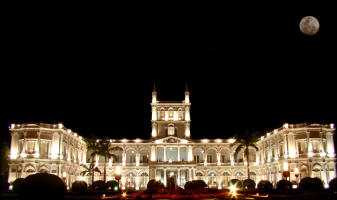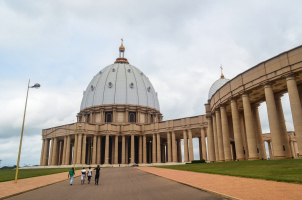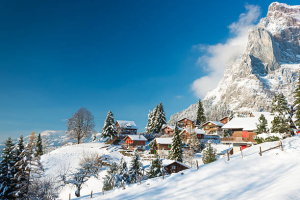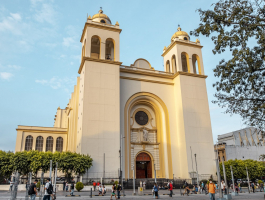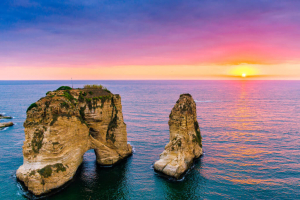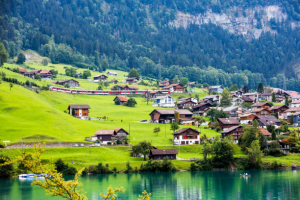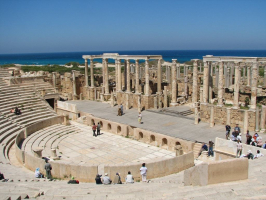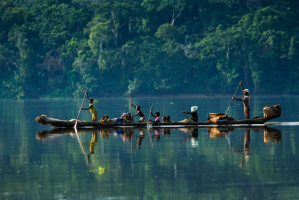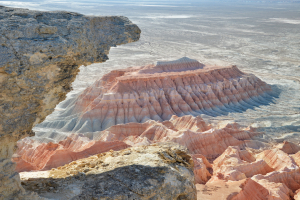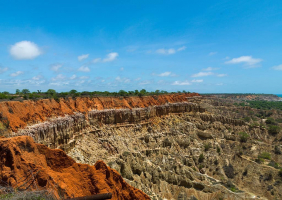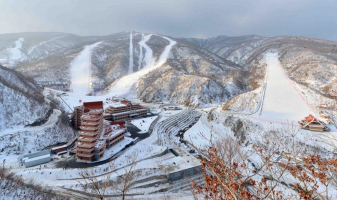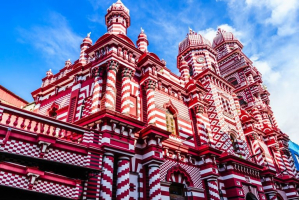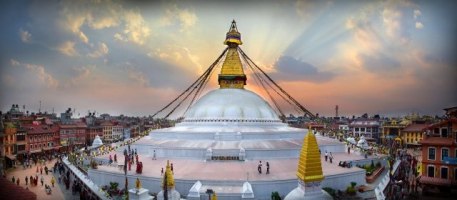Top 10 Best Places to Visit in Canada
Canada has a diverse set of vacation destinations, ranging from the cosmopolitan streets of Toronto to the mountain peaks of the Canadian Rockies. It can be ... read more...difficult to decide which one is ideal for your next getaway. Toplist considered several factors, including affordability, entertainment options, and the diversity of hotels and resorts, as well as user votes and expert opinions. So, let's find out the best places to visit in Canada with Toplist in this article!
-
If you want to experience the lifestyle of a Swiss ski village but don't want to pay for a transatlantic flight, consider Banff, because of its location in the heart of the Canadian Rockies, close to the southeastern border of Banff National Park, Canada's first national park. Banff caters to adventurous explorers who prefer to end the day in a nice hotel rather than roughing it in the campgrounds.
There are numerous opportunities for adventure, so choose your sport: Ski Mount Norquay, hike to the massive, free-standing limestone pillars known as the Hoodoos, "scramble" up the face of Stoney Squaw Mountain, or bike along Healy Creek. When you're tired, retire to your cozy (and warm) resort and refuel with a heaping helping of bison meat.
The months of June to August and December to March are ideal for a visit to Banff. Nature lovers will want to visit the park when the weather is pleasant (and while the hotel rates in town are at a reasonable level). Skiers, on the other hand, will want to spend their vacation during the height of winter. Depending on your interests, Banff can be considered a year-round destination. Temperatures in the summer range from 40 to 70 degrees Fahrenheit. No matter when you go, bring sunglasses, a hat, and plenty of sunscreens to protect yourself from UV rays: the sun is strong at these alpine altitudes.
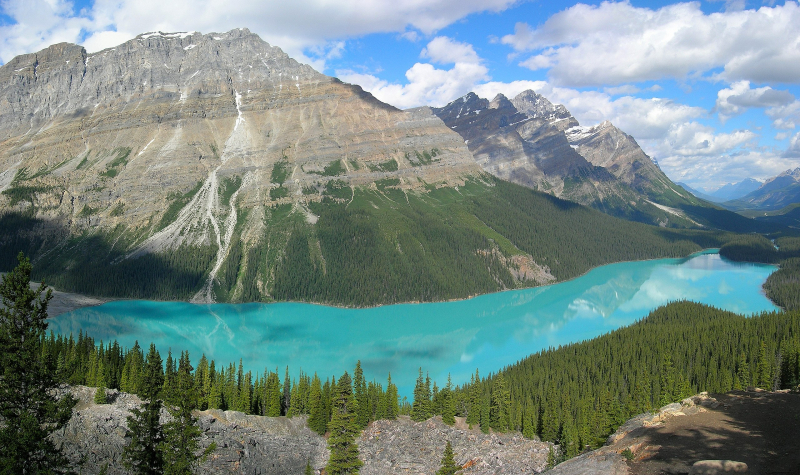
Banff 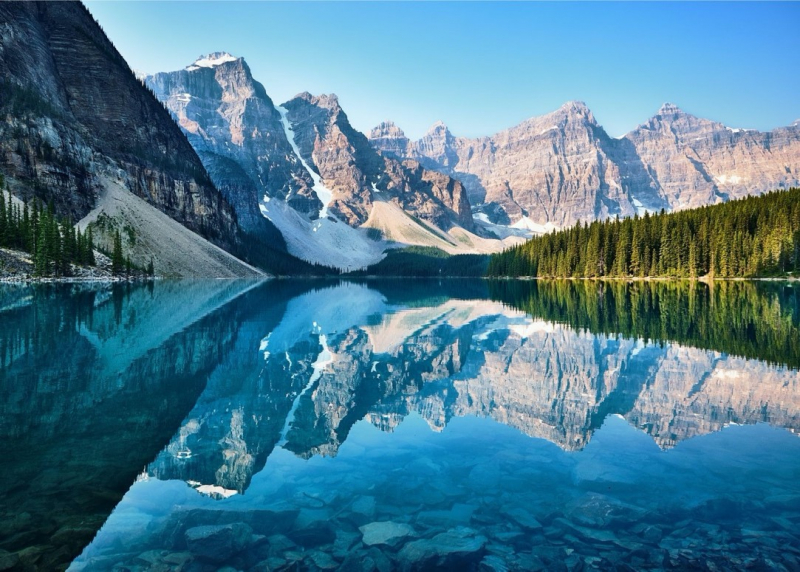
Banff -
Vancouver is a young city even by North American standards. Vancouver, surrounded by mountains and beaches, is both an urban and natural playground: Its upscale atmosphere, high-end boutiques, and penchant for healthy eating have earned it the moniker "Hollywood North". Vancouver and its breathtaking backdrop have been the setting for a slew of popular television shows and major motion pictures, so don't be surprised if you recognize landmarks from your favorite scenes or come across a production in progress.
However, this mitten-shaped city on Canada's western border attracts more than just pop culture junkies. Hiking, mountain biking, kayaking, whitewater rafting, and skiing will pique your interest. Are you looking for some rest and relaxation? Try relaxing on one of the 11 miles of beaches or in one of the many parks. During the winter, you can escape to one of the top-rated museums or take your children to one of the family-friendly attractions, such as Granville Island or the Capilano Suspension Bridge. When you add excellent shopping, dining, and nightlife scenes to the mix, it's easy to see why Vancouver is regarded as a go-to destination for the multifaceted traveler.
The best months to visit Vancouver are March to May and September to November, when the weather is mild and hotel rooms are inexpensive. Summer is the most popular season due to the promise of warmer weather; however, if you're planning a trip during this time, make sure to book your hotel room at least two or three weeks in advance. If you enjoy winter sports, don't let the freezing temperatures deter you: this city is an excellent home base for skiers and snowboarders looking to test the powder at Grouse Mountain or nearby Whistler.
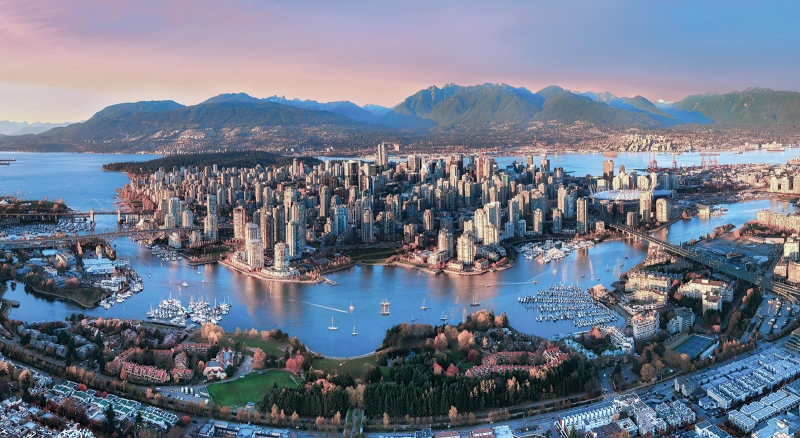
Vancouver 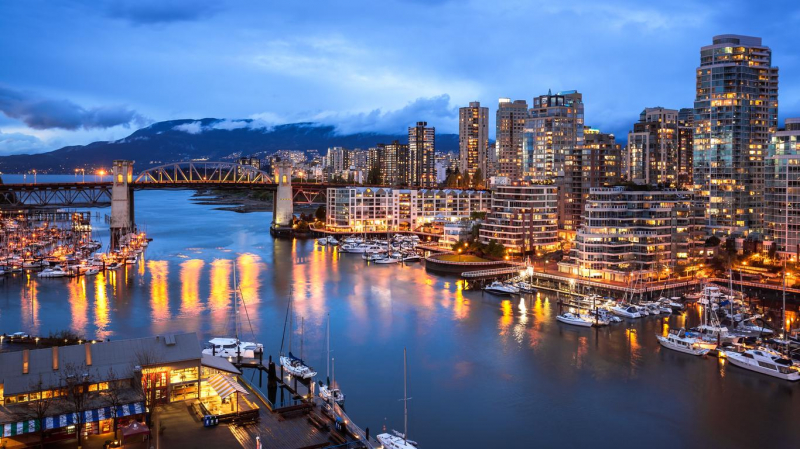
Vancouver -
It's easy to see why many people consider Niagara Falls to be one of the world's top natural wonders. Or why, over the years, it has been the site of some incredible (and now illegal) daredevil antics. Your jaw will drop the moment you see the massive Niagara River rumbling toward a 188-foot waterfall at 20 to 30 (and up to 68) mph. The river's rapid flow creates a misty fog and an audible roar heard from miles away. Crowds flock to the railings at the top to feel the mist on their faces. Boats, platforms, and observation decks support colorful poncho-clad visitors as you follow the water's path downward.
Niagara has evolved from a classic honeymoon destination to a cheesy honeymoon destination, and it is now an odd mix of the two. Aside from the breathtaking waterfalls, there is a high concentration of quickie wedding chapels and neon-lit hotels. However, strolling through the nearby Inniskillin Winery's ice wine vineyards, as well as enjoying the lush landscape at the Niagara Parks Botanical Gardens, is truly romantic. So, hop in the two-seater with your special someone or pack the minivan with your family and take a spectacular trip to the majestic Niagara Falls.
The best time to visit Niagara Falls is June to August. Waterfall mists and breezes can make the area feel cooler. You'll spend more money and face more crowds, but visiting in the summer allows you to take advantage of the weather and attractions to the fullest. In addition, the free Discover Niagara Shuttle is fully operational during the summer season, making it simple to get from one attraction to another. Because of the colder temperatures, spring and fall attract fewer visitors, but each season has a few advantages. Harvest season at local wineries occurs in the fall, while spring's warming temperatures usher in colorful blooms at the botanical gardens.
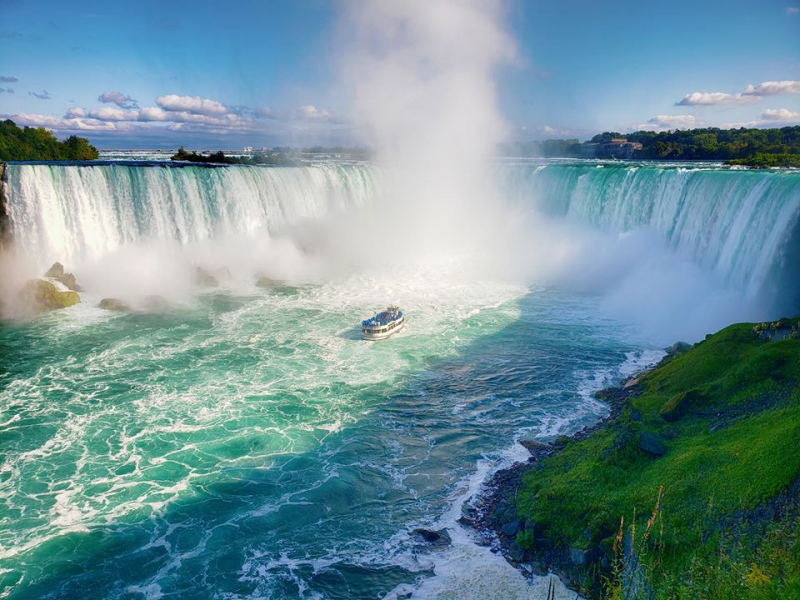
Niagara Falls 
Niagara Falls -
One of Canada's wildest places, Jasper National Park provides kaleidoscopic panoramas at every turn. As they trek from the peaks of Mount Edith Cavell to the caverns of Maligne Canyon, visitors can marvel at numerous views. The park, located on Alberta's eastern border, serves as a beacon for Northern Hemisphere adventurers. Jasper is the largest park in the Canadian Rockies and has been designated as part of a UNESCO World Heritage Site, along with Banff and a few other parks. With over 2.7 million acres to explore, visitors are sure to see wildlife ranging from caribou to wolverine to moose.
The park contains all of the expected natural wonders, such as mountains, rivers, and even glaciers, but the town of Jasper elevates the park's possibilities. In addition to serving as a convenient base camp, Jasper offers a variety of tours and excursions for visitors to take advantage of. Not to mention that winter in Jasper allows visitors to enjoy cold-weather activities such as skiing in Marmot Basin or snowshoeing in the backcountry. There's always a reason to visit Jasper, no matter the season.
The months of March through May, as well as September through November, are ideal for visiting Jasper National Park. While traveling during these seasons may mean colder temperatures, it's a small price to pay for a less crowded and quieter park. Moreover, during the shoulder seasons, camping, hiking, and mountain biking are still viable options. Summer offers slightly warmer temperatures, with highs around 70 degrees and lows around 45 degrees, as well as the opportunity for water activities, if you don't mind crowds.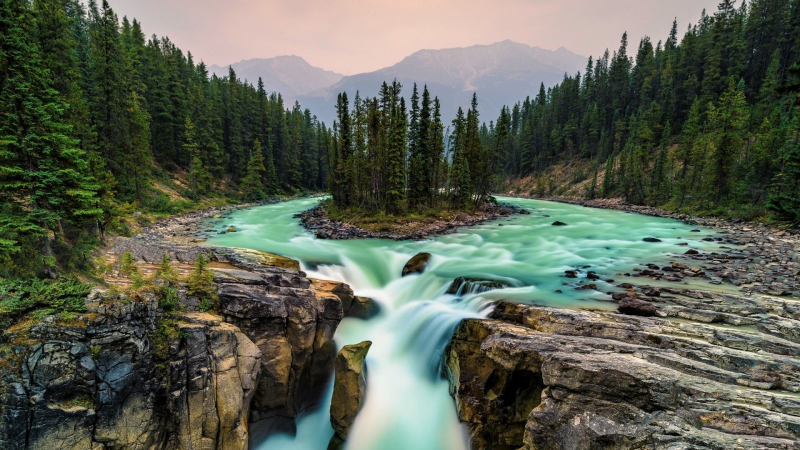
Jasper National Park 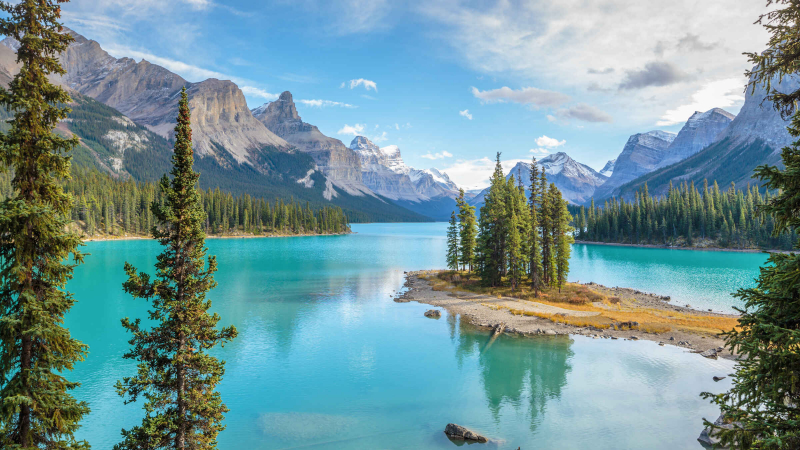
Jasper National Park -
With 18th-century structures blending into a 21st-century skyline, this city represents the fusion of the Old and New Worlds. Rainbow flags flutter alongside cloth emblems from India, Portugal, and France, and traditional French pastries coexist with the distinctively sweet sesame seed, Montreal-style bagel. Just when you thought you'd seen everything, a short elevator ride transports you to another city several stories below ground level.
The top attractions in this versatile city include world-class museums and bustling marketplaces. Begin your tour by walking through the ancient cobblestone streets of Vieux-Montréal. Explore historic cathedrals or enjoy a cappuccino at one of the traditional French cafes along Boulevard Saint-Laurent. If history doesn't pique your interest, head to the bustling downtown area for some retail therapy or to Parc du Mont-Royal for a hike. Just remember to save some energy for when the sun goes down; Montreal, particularly Rue St-Denis, is known for a nightlife scene that lasts until the early hours of the morning.
The months of March to May, as well as September to November, are ideal for visiting Montreal because the weather is milder and hotel vacancies are plentiful. Aside from fluctuating rates, you'll discover that there's never a bad time to visit here. The heated Underground City passages provide refuge during the winter, while the warm summer temperatures make exploring on foot much more enjoyable. If you're drawn to the mild summer, make sure to book ahead of time: Montreal hosts a number of popular festivals during this time of year.
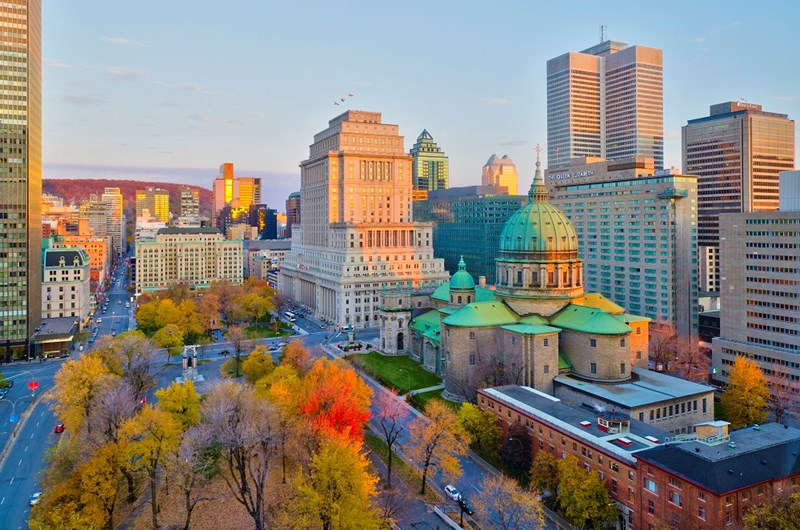
Montreal 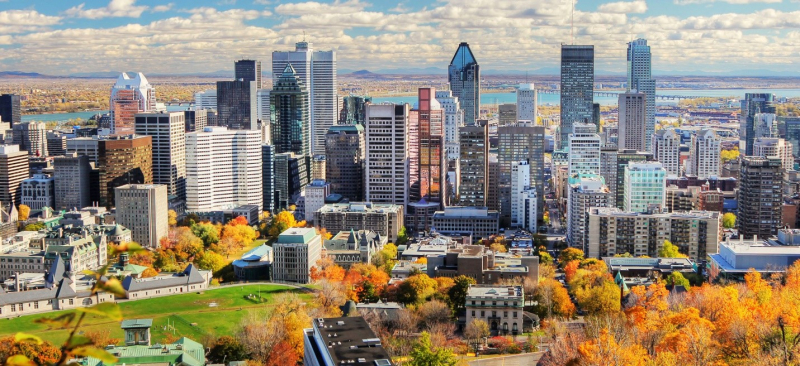
Montreal -
The sight of cobblestone streets and towering cathedrals; the sound of French pleasantries and tourists' "Oohs;" the smell of fresh-baked bread and pungent cheese; and the taste of creamy cafe lattes and buttery croissants. You are in France, according to all of your senses. But they're mistaken: you're in Québec.
For a long time, Québec City – the capital of the Canadian province of Québec – was overshadowed by its neighbor, Montréal, but the celebration of its 400th birthday in 2008 catapulted Québec City back into the spotlight. Since then, visitors have flocked here to experience the allure of this UNESCO World Heritage site for themselves. As the birthplace of New France, Québec City continues to uphold its motherland's culture. Passing through Old Québec's fortified walls reveals a world straight out of a European painting: 17th- and 18th-century buildings house bakers, bistros, and boutiques, while cobbled squares are drowned out by a sea of cafe tables. And a piece of Québec City's rich heritage awaits discovery around every corner.
The months of June through September, as well as December through February, are ideal for a visit to Québec City. The city's social calendar is jam-packed with festivals during the summer and winter months. Because of the lack of special events, the spring and fall shoulder seasons see fewer tourists, but this means that travelers can take advantage of low rates as well as seasonal perks: Spring is maple syrup season, and autumn is ablaze with vibrant foliage.
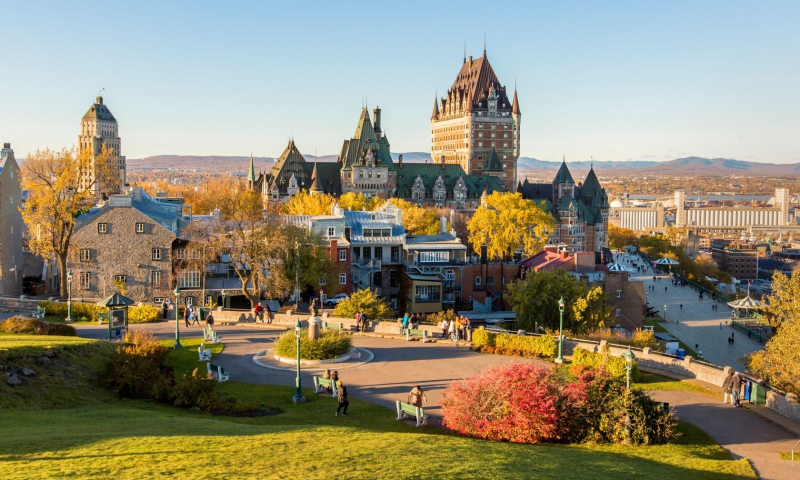
Quebec City 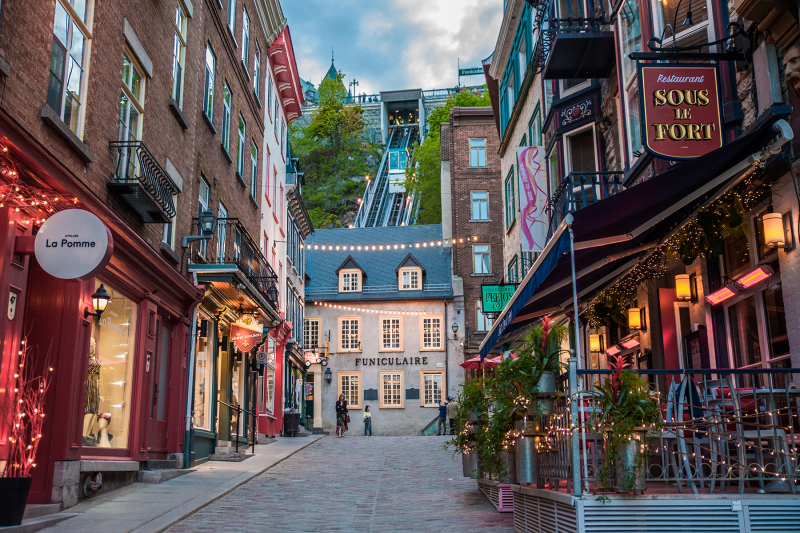
Quebec City -
Despite being only a 90-minute ferry ride from bustling Vancouver, British Columbia's capital city appears to be a world away. Victoria, on the other hand, takes a more quaint approach than its younger neighbor. This small city on Vancouver Island's southern tip is deeply rooted in its Colonial past, with distinctively British traditions like afternoon tea at the Fairmont Empress and a pint at the pub. But that doesn't mean this is a destination only for Anglophiles. Despite its nostalgic tendencies, this city attracts a diverse range of visitors with excellent museums honoring its aboriginal heritage, charming architecture, and spectacular harbor views.
But don't stop at the Inner Harbour; there's a lot more to this area than manicured gardens and afternoon tea. Vancouver Island is also known for its long beaches and lush vineyards. Drive from downtown Victoria to Sooke, a vibrant boating and fishing town, or out to the Cowichan Valley, where rows of vines are laden with grapes. Bring your camera, because the scenery is sure to delight even the most jaded traveler.
The months of March to May and September to November are ideal for visiting Victoria and Vancouver Island. The region has some of the country's mildest weather and driest summers, so expect comfortable temperatures in the spring and fall, even if there may be a light drizzle here and there. Summer is by far the most popular time to visit due to the numerous festivals held in Victoria and throughout Vancouver Island. Because of its proximity to Whistler, Canada's most popular ski destination, this area also attracts a sizable number of winter visitors. If you visit between April and October, you'll have the best chance of seeing whales.
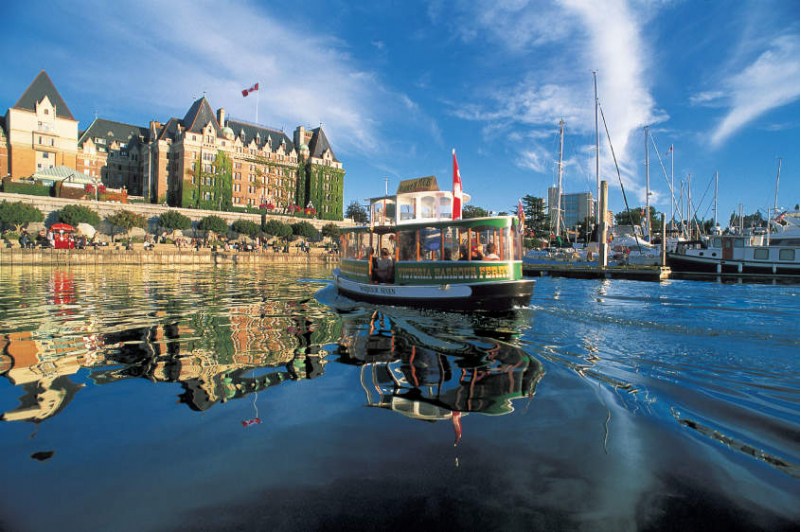
Victoria & Vancouver Island 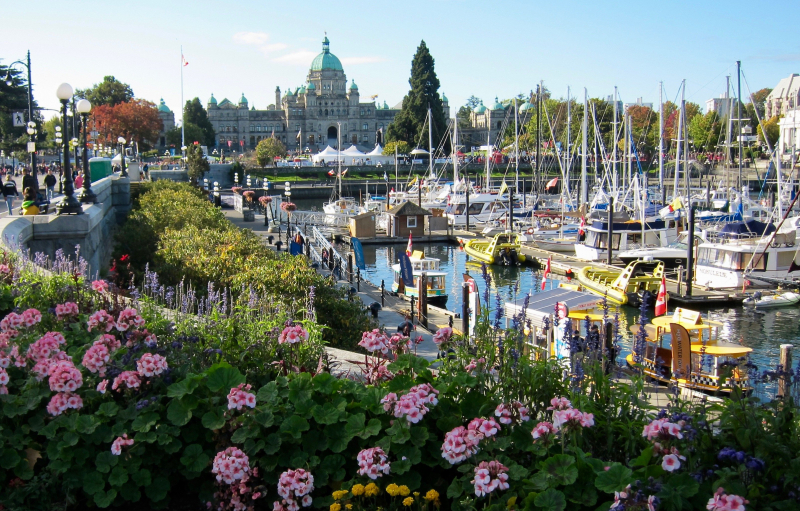
Victoria & Vancouver Island -
Whistler's offerings suit every season, with snow-capped peaks and powdered steeps, sparkling lakes and gushing waterfalls, challenging hiking trails and inviting restaurants. However, Whistler Blackcomb remains its most popular attraction. The sprawling resort covers more than 8,100 acres of land, receives nearly 40 feet of snowfall per year, and is home to some of North America's most active après-ski spots. The entire town, which is about 75 miles north of Vancouver, exudes a ski-chic vibe, with dozens of ski and snowboard competitions and festivals held each year.
While Whistler is ideal for active vacationers, more laid-back visitors will enjoy the area's museums and art galleries, which are packed with informative exhibits. In addition, the town offers family-friendly activities and attractions such as ice skating, summer concerts, and the Whistler Sliding Centre, as well as a plethora of shopping and dining options. With pristine ski areas and a plethora of outdoor activities, it's easy to see why so many people want to grab their gear and head to Whistler.
The months of June through August, as well as December through March, are ideal for a visit to Whistler. Peak skiing conditions are found in the mountains from December to February, with March bringing warmer temperatures but still providing good snow. Blackcomb Mountain reopens for glacier skiing in June and July, while the rest of Whistler serves as a base for camping and exploring the great outdoors. Meanwhile, the months of September, October, and November are ideal for leaf-peeping. April and May have mild weather, making them ideal for outdoor activities like hiking and biking.
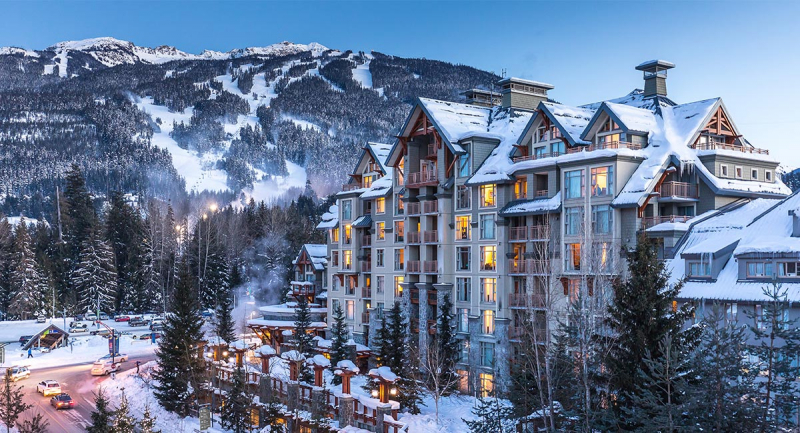
Whistler 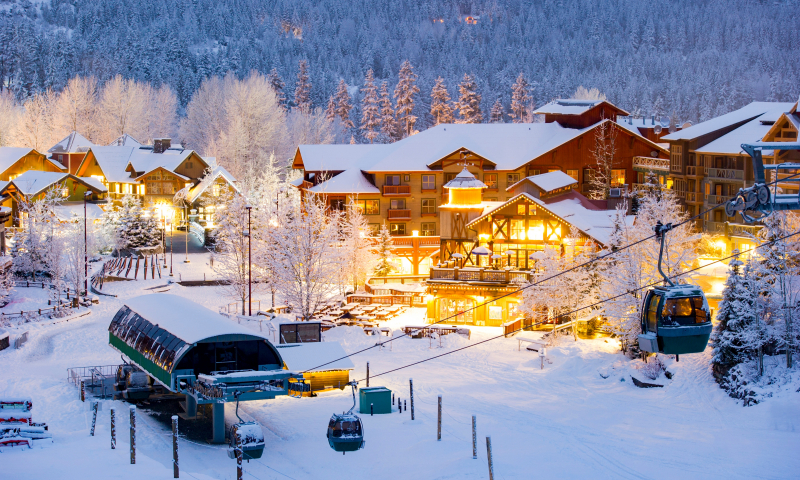
Whistler -
Prince Edward Island, with its rolling green hills, red sandstone cliffs, and a delicious bounty of seafood (this is where PEI mussels come from, after all), is the place to visit for a relaxing respite from Canada's more adventure-driven destinations. When you're not at the beach, practice your swing at one of the island's golf courses. Also, keep an eye out for the island's seal population (four kinds call the island home either full or part-time).
The public education system promotes the island's cultural traditions of art, music, and creative writing. The Charlottetown Festival is an annual arts festival held at the Confederation Centre of the Arts. The documented music history of Prince Edward Island begins in the nineteenth century with religious music, some of which was written by Watson Duchemin, a local pump and block maker and organ importer. Several major bands were active, including the Sons of Temperance Band and the Charlottetown Brass Band. Acadian, Celtic, folk, and rock music are popular today, with performers such as Gene MacLellan, his daughter Catherine MacLellan, Al Tuck, Lennie Gallant, Two Hours Traffic, and Paper Lions. The Charlottetown Festival is an annual arts festival held at the Confederation Centre of the Arts, as well as the Island Fringe Festival, which takes place in and around Charlottetown.
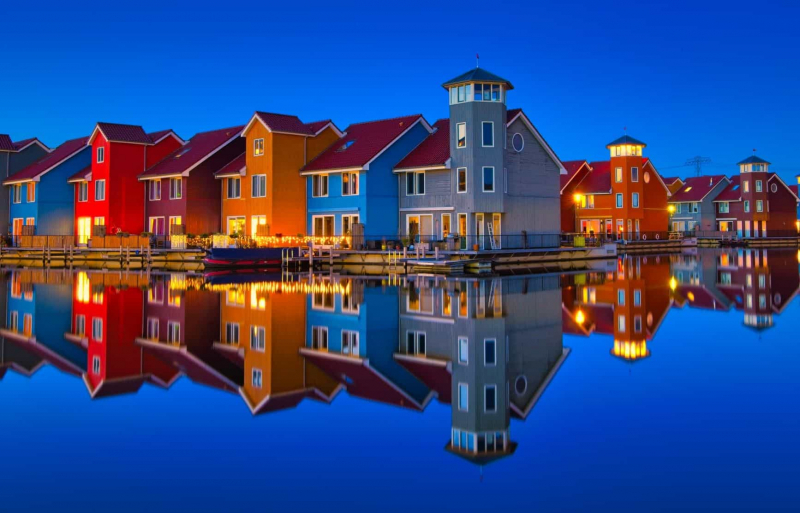
Prince Edward Island 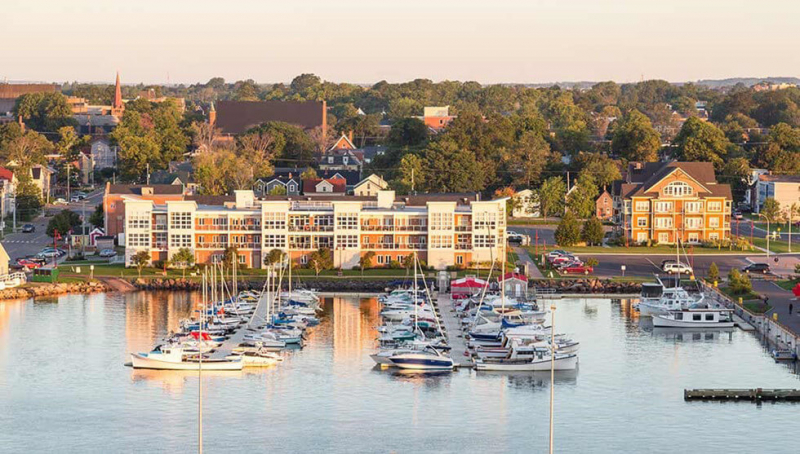
Prince Edward Island -
To newcomers, Toronto may appear to be just another large city. Downtown is dotted with skyscrapers, the streets are bustling with people on the move, and the public transportation system is excellent. But, if you look beneath the hood of Canada's largest city, you'll notice that there's more to it than an impressive skyline. Toronto is regarded as one of the world's most culturally diverse cities, with more than half of the population born outside of the city. Toronto is home to 200 ethnic groups and over 140 different languages, making this Ontario destination a world unto itself. With Greektown, Little Italy, Koreatown, and Chinatown all within city limits, visitors to Toronto may feel as if they've visited more than a couple of countries.
The city also has one of the world's tallest freestanding towers, the CN Tower, and the world's largest underground shopping mall, PATH. Aside from its major attractions, Toronto should be experienced in the same way as any other big city: sipping a cocktail in a corner restaurant, browsing multicultural shops on quirky neighborhood blocks, and hopping on and off the subway for a night on the town.
The months of late April through May, as well as September through October, are ideal for visiting Toronto. During the summer months, the sidewalks come alive with pedestrian marketplaces, patio restaurants, and a variety of cultural events. Prices, on the other hand, rise as the temperature rises. If you want to save money on hotels, bring a parka and plan your trip for the winter. Spring and fall are your best bets for lower prices and temperatures above freezing.
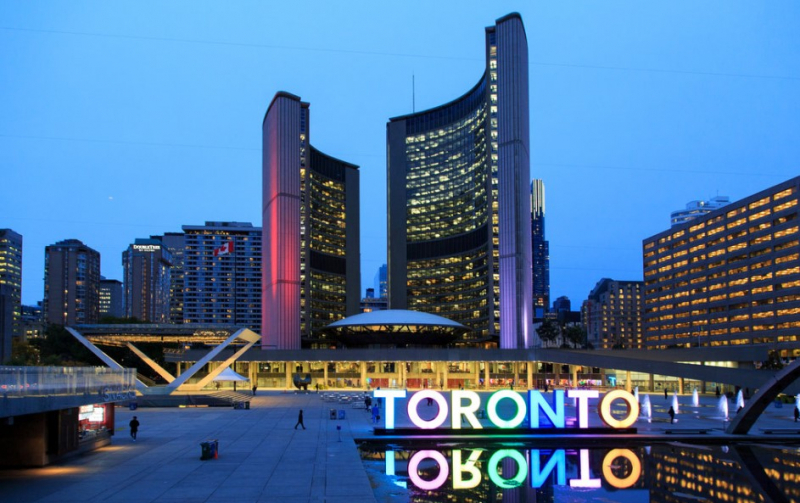
Toronto 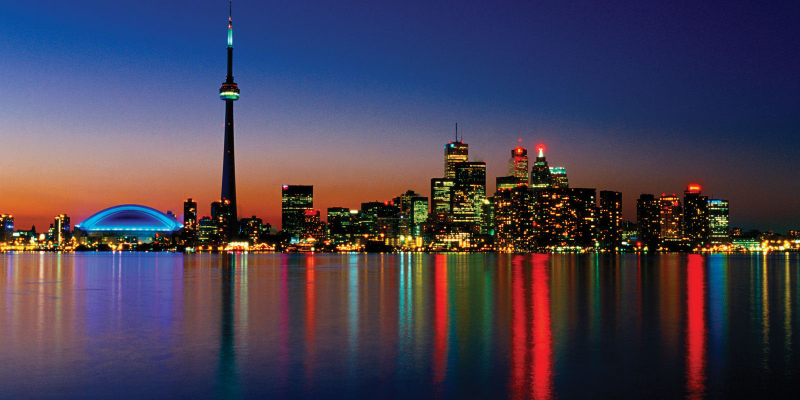
Toronto












